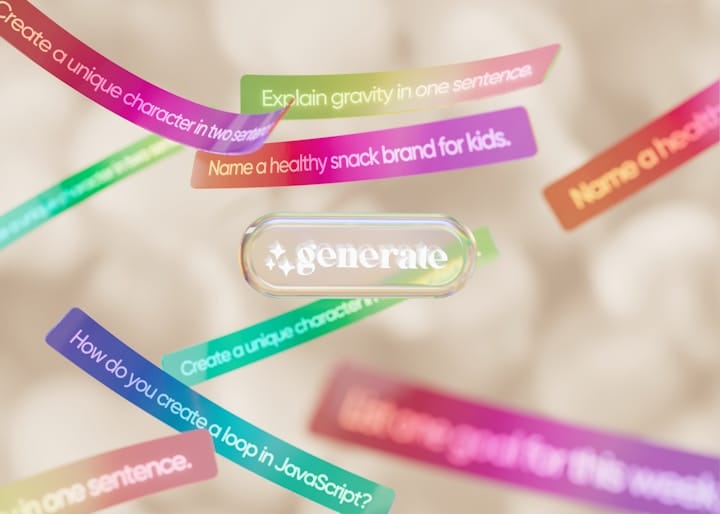Introduction
In today's fast-paced digital landscape, content creation can feel overwhelming for marketers and business owners alike. The constant demand for fresh, engaging material can lead to burnout and wasted resources. Fortunately, there is a powerful solution at hand: content repurposing. Content repurposing is the art of taking existing content and adapting it for use across different platforms and formats. Doing so not only saves time and effort but also maximizes the reach and engagement of the content, ensuring that messages resonate with diverse audience segments.
This blog post will guide you through the strategic principles of content repurposing, detailing how to do it efficiently and effectively. By understanding the nuances of various platforms and formats, businesses can create a sustainable content strategy that continually engages audiences while minimizing the stress associated with constant creation.
Skip Ahead
- Understanding the Benefits of Content Repurposing
- Identifying Content to Repurpose
- Choosing the Right Platforms
- Best Practices for Repurposing Content
- Tools and Technologies for Efficient Repurposing
- Measuring the Success of Repurposed Content
- Case Studies of Successful Content Repurposing
Understanding the Benefits of Content Repurposing
Before diving into the strategies of repurposing content, it is essential to grasp the multitude of benefits it brings to your marketing strategy. Repurposing content allows for:
- Maximized Reach: Different demographics engage on various platforms; by repurposing content across channels like Facebook, Instagram, and LinkedIn, brands increase the chances of reaching a larger audience.
- Cost-Efficiency: Creating high-quality content from scratch can be resource-intensive. Repurposing existing content saves time and money, allowing businesses to allocate resources elsewhere.
- Enhanced Brand Consistency: By repurposing content, businesses can maintain a consistent brand message across multiple platforms, reinforcing their identity.
- Improved SEO: Regularly sharing and updating content can boost your search engine rankings, attracting more organic traffic to your website.
- Audience Engagement: Repackaging content diversifies the type of engagement with your audience. Some people may prefer infographics, while others enjoy videos or podcasts.
Understanding these benefits creates a strong foundation for implementing effective repurposing strategies that can significantly elevate your content marketing efforts.

Identifying Content to Repurpose
The first step in the repurposing process is identifying which pieces of content hold potential for transformation. Not all content is worth repurposing, and knowing what to focus on will streamline your efforts. Here are several key factors to consider:
1. Select High-Performing Content
Review analytics to identify past content that has driven high engagement and conversions. Google Analytics and HubSpot can provide insights into which blogs or social media posts garnered the most attention.
2. Focus on Evergreen Content
Evergreen content remains relevant over time, making it perfect for repurposing. Topics like how-to guides, best practices, or industry insights will continue to provide value.
3. Analyze the Format and Medium
Consider various formats and mediums that your audience consumes. For instance, a popular blog post can be transformed into a slideshow presentation, a podcast episode, or even a video format, expanding its outreach.
4. Address FAQs and User Needs
Evaluate customer inquiries and frequently asked questions related to your industry. This forms an excellent basis for content that can be repurposed into tutorials, infographics, or social media posts.
By applying these guidelines, businesses can systematically identify content opportunities that will yield the best results when repurposed.
Choosing the Right Platforms
Once you’ve identified the content to repurpose, it is essential to select the right platforms for distribution. Each social media platform, for instance, has its nuances and audience preferences. Here are a few considerations for choosing the best platforms for your repurposed content:
1. Audience Demographics
Different platforms attract varying demographics. For example:
- Facebook is versatile, catering to a broad audience of various ages and backgrounds.
- Instagram skews younger and is ideal for visually stunning content.
- LinkedIn is best for B2B content, professional insights, and industry news.
2. Content Type Suitability
Consider which content formats perform best on specific platforms:
- Use video snippets or teaser clips on TikTok to engage younger audiences.
- Share infographic versions of blog posts on Pinterest for heightened visibility.
- Publish long-form content on LinkedIn for in-depth insights.
3. Cross-Promotion Opportunities
Develop a strategy that allows you to promote content across multiple platforms. For example, share a repurposed blog post on LinkedIn, while promoting snippets on Twitter to drive traffic back to your blog.
By choosing the right platforms, businesses can ensure their repurposed content reaches the right audience and generates maximum engagement.
Chart of social media demographics
Best Practices for Repurposing Content
To maximize the effectiveness of your content repurposing efforts, implement the following best practices:
1. Adapt Content for Each Platform
It's essential to tailor content to fit the specific platform. For example, transform a detailed blog post into a succinct social media post, ensuring it aligns with the platform's character limits and audience expectations.
2. Maintain Consistent Branding
While adapting content, ensure that brand messaging and tone remain consistent across all platforms. Consistency builds trust and strengthens brand identity.
3. Update and Refresh Content
When repurposing, take the opportunity to revise and update the content to make it relevant to current trends, stats, or changes in your industry.
4. Engage Your Audience
Include calls-to-action (CTA) that encourage audience interaction. Ask for opinions, feedback, or encourage them to share their own experiences related to the content.
5. Monitor and Adjust
After repurposing content, continuously monitor its performance metrics. Use analytics to assess the impact of the content on different platforms and make necessary adjustments as required.
Following these best practices ensures that your repurposed content resonates with the audience and maximizes engagement.
Tools and Technologies for Efficient Repurposing
Leveraging tools and technologies can make the content repurposing process more streamlined and effective. Here are some key tools that can enhance your efficiency:
1. Canva
This graphic design tool allows users to create high-quality visuals for infographics, social media posts, and presentations without the need for extensive design skills.
2. Lumen5
An excellent platform for transforming blog posts into engaging videos. The automatic text-to-video feature allows you to create compelling visual content from written pieces.
3. Hootsuite
This social media management tool enables you to distribute repurposed content across multiple platforms efficiently, while also helping to schedule posts and analyze performance.
4. BuzzSumo
Useful for identifying trending topics and popular content, BuzzSumo can guide you in selecting which parts of your content to repurpose based on audience interest.
By utilizing these tools and technologies, businesses can simplify their repurposing efforts and optimize their content distribution strategies.
Measuring the Success of Repurposed Content
Tracking the success of your repurposed content is crucial in understanding its impact and return on investment. Utilize the following metrics:
1. Engagement Metrics
Track likes, shares, comments, and overall interactions. High engagement rates often indicate how well the repurposed content resonates with the audience.
2. Traffic Sources
Using tools like Google Analytics, monitor traffic sources to your website. Identify which platforms drove the most traffic and conversions to enhance future strategies.
3. Conversion Rates
Evaluate the conversion rates associated with repurposed content. For example, if a blog post was transformed into a lead magnet (eBook/downloadable resource), measure how many subscribers were generated as a result.
4. Audience Feedback
Encourage user feedback through surveys or comments to gain qualitative insights into their experience with the repurposed content. This can direct future repurposing efforts.
By carefully measuring the success of your repurposed content, you can refine your strategy and improve overall effectiveness.

Case Studies of Successful Content Repurposing
To illustrate the effectiveness of content repurposing, let's examine a few successful case studies:
Case Study 1: HubSpot
HubSpot is a prime example of a brand that excels in content repurposing. They often convert their comprehensive blog articles into short, digestible videos, infographics, and even podcasts, enabling them to reach diverse audiences on different platforms effectively.
Case Study 2: Neil Patel
Neil Patel utilizes his blog content to develop engaging YouTube videos. Each video breaks down his blog topics into visual learning experiences, grabbing the attention of viewers who may prefer auditory or visual formats.
Both cases highlight how effectively repurposing content can enhance engagement and visibility while saving time and effort on new content creation.
Conclusion
Mastering the art of content repurposing is a game-changer for marketers and business owners. By understanding its benefits, identifying valuable content to rework, selecting the right platforms, implementing best practices, utilizing effective tools, and measuring performance, businesses can create a sustainable content strategy that thrives in the digital era.
Repurposing not only reduces the stress of constant content creation but also allows brands to engage with their audience across multiple channels efficiently. With thoughtful strategies and adaptability, any business can transform existing content into a powerful asset that captivates and resonates with diverse audiences.
By making repurposing a core component of your marketing strategy, your business can leverage existing assets to reach new heights, ensuring consistent brand messaging and customer engagement.







